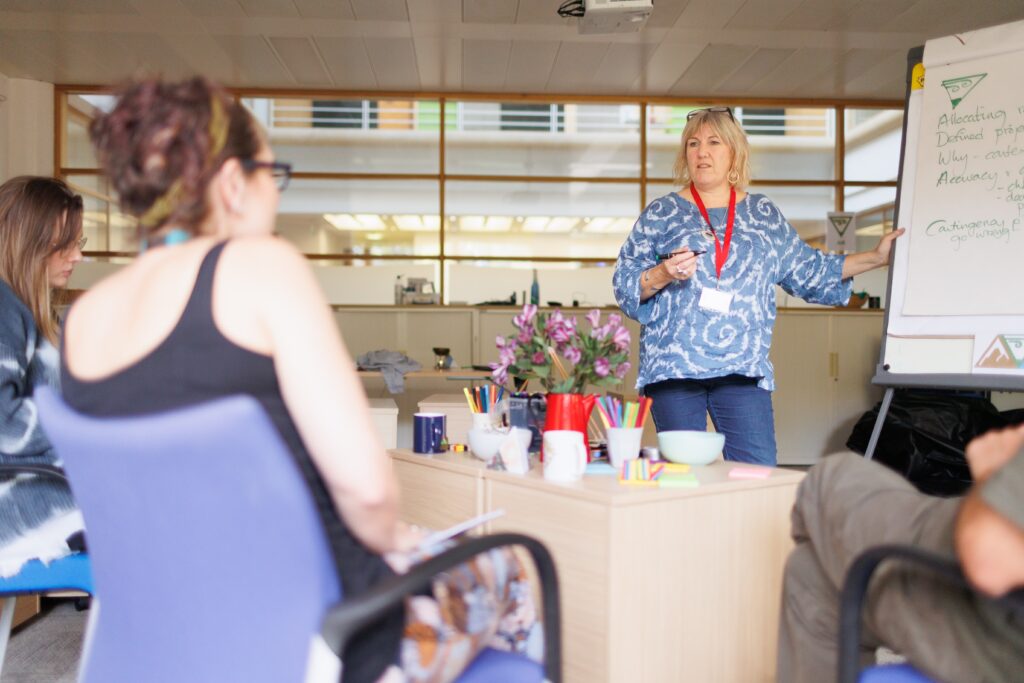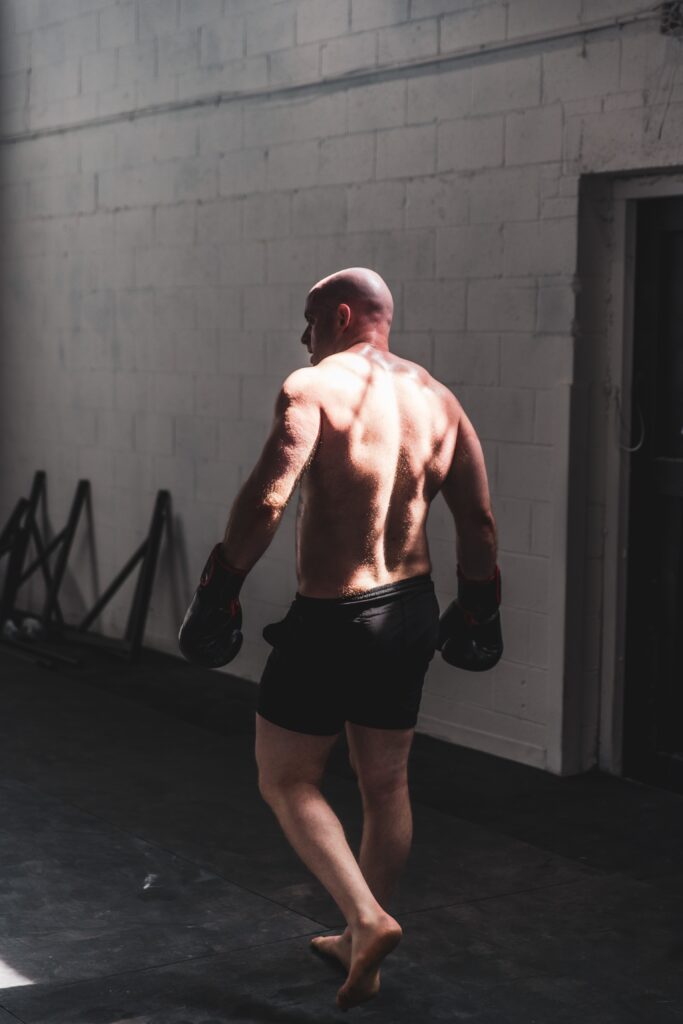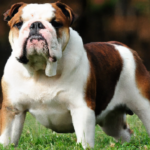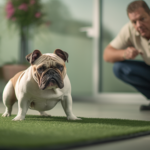If you’re looking to maximize potty training success for your English Bulldog, it’s essential to understand the unique characteristics and needs of this breed. English Bulldogs, with their distinctive appearance and gentle yet stubborn nature, require specific attention when it comes to training, especially in potty training. Understanding their diet, exercise routine, and behavioral patterns is crucial for effective training strategies. Additionally, considering their physical attributes, such as bladder capacity and specific nutritional requirements, will contribute to a successful potty training regimen. By implementing methods like crate training, reward-based learning, and seeking professional guidance if necessary, you can overcome the usual challenges of training. By exploring common training mistakes and providing innovative, bulldog-friendly alternatives, you can enhance the learning experience for both you and your pet. A balanced approach that combines patience, consistency, and positive reinforcement is key to achieving training success, addressing issues like regression and indoor marking. So, let’s delve into the world of potty training an English Bulldog and discover the sensory advantages it can bring.

Considerations for Potty Training English Bulldogs
Potty training English Bulldogs requires a comprehensive understanding of their unique characteristics and needs. English Bulldogs are gentle yet stubborn, making them a challenge to train. Therefore, it is crucial to approach potty training with patience, consistency, and a friendly tone. By considering their individual diet, exercise routines, and behavioral patterns, you can create an effective potty training strategy that maximizes success.
Understanding English Bulldogs’ characteristics
English Bulldogs have distinct physical attributes and behaviors that influence their potty training process. They are known for their adorable appearance, including a wrinkled face, sturdy build, and a low-slung, muscular body. However, their characteristic stubbornness can make potty training challenging. It’s essential to approach their training with positive reinforcement and a firm yet friendly tone.
Importance of diet and exercise in potty training
A balanced diet and regular exercise are critical factors in successful potty training for English Bulldogs. Providing your Bulldog with nutritious food that suits their specific dietary requirements will help regulate their bathroom habits. Additionally, ensuring they receive enough exercise and mental stimulation helps prevent accidents and promotes healthy bowel movements. Consulting with a veterinarian about the Bulldog’s nutritional needs can greatly aid in their potty training progress.
Behavioral patterns and their impact on training
Understanding the behavioral patterns of English Bulldogs is key to effective potty training. Bulldogs tend to develop routines and habits; therefore, establishing a consistent schedule for feeding, exercise, and bathroom breaks can help expedite the training process. Bulldogs also thrive on positive reinforcement, so when they exhibit desirable behavior, such as going to the bathroom outside, rewarding them with praise and treats will reinforce their actions.

Physical Attributes and Potty Training
When potty training an English Bulldog, it is important to consider their physical attributes, namely their bladder capacity and specific nutritional requirements. Bulldogs typically have a smaller bladder capacity than larger dog breeds, meaning they may need more frequent bathroom breaks. Adjusting the training schedule to accommodate their smaller bladder can help prevent accidents indoors. Additionally, their unique nutritional needs, such as high-quality food formulated for Bulldogs, can contribute to healthier bowel movements and easier potty training.
Bladder capacity and its implications
Due to their smaller bladder capacity, English Bulldogs may need to be taken outside more frequently to prevent accidents indoors. It is recommended to create a consistent schedule, with short intervals between bathroom breaks, to accommodate their limited bladder capacity. By closely monitoring their water intake and planning regular outdoor trips, you can reduce the chances of accidents occurring and instill proper bathroom habits.

Specific nutritional requirements for effective potty training
English Bulldogs have specific nutritional needs that can impact their potty training. It is important to provide them with a high-quality diet formulated for Bulldogs to support their overall health and digestion. Consultation with a veterinarian can help determine the best food options that promote regular bowel movements, making potty training easier. Additionally, feeding them at consistent times throughout the day can also establish a routine for their bathroom habits.
Effective Training Methods
When it comes to potty training English Bulldogs, several techniques have proven effective. Implementing crate training, reward-based learning, and seeking professional guidance when needed can significantly enhance the training experience.

Crate training as a potty training technique
Crate training is a useful technique in potty training English Bulldogs. Bulldogs naturally seek a den-like environment, and a crate can provide a safe and comfortable space for them. By introducing the crate as a positive and cozy place, Bulldogs are less likely to have accidents inside it. The crate should be appropriately sized, allowing enough room for the Bulldog to stand, turn, and lie down. Gradually increasing their time in the crate and rewarding them for using it correctly helps promote potty training success.
Reward-based learning for successful potty training
Reward-based learning is an effective method for potty training English Bulldogs. Bulldogs respond well to positive reinforcement, so praising and rewarding them for going to the bathroom outside will encourage them to repeat the behavior. Treats, verbal praise, and gentle petting can be used as rewards to reinforce their successful bathroom habits. Consistency is key in reward-based learning, ensuring that the Bulldog associates the behavior with the positive outcome.

Seeking professional guidance for complex cases
In some cases, potty training English Bulldogs can present challenges that require professional guidance. If your Bulldog continues to have frequent accidents indoors or exhibits persistent resistance to potty training, consulting with a professional dog trainer or a veterinarian who specializes in behavioral training may be necessary. These experts can assess the situation, provide personalized advice, and offer specific strategies to address any underlying issues hindering the potty training process.
Common Training Mistakes and Solutions
Addressing accidents and indoor marking is an essential aspect of potty training English Bulldogs. Additionally, understanding and managing regression in potty training can help maintain progress and ensure success.
Addressing accidents and indoor marking
Accidents and indoor marking can be frustrating during the potty training process. Bulldogs may mark their territory indoors due to a lack of proper training or anxiety. When accidents occur, it is important not to punish the Bulldog, as this can lead to confusion and setbacks. Instead, clean up accidents thoroughly using enzymatic cleaners to eliminate odors that might attract the Bulldog back to that spot. Reinforcing proper bathroom habits and providing plenty of outdoor opportunities for elimination can help prevent future accidents.
Dealing with regression in potty training
Regression in potty training can occur for various reasons, such as changes in routine or new environments. When faced with regression, it is crucial to remain patient and consistent. Revisit the basics of potty training by reinforcing the Bulldog’s training routine, increasing outdoor bathroom breaks, and offering additional praise and rewards for proper elimination. If the regression persists, consulting with a professional trainer or veterinarian can help address any underlying issues and develop a tailored strategy to overcome the setback.
Innovative Training Alternatives for English Bulldogs
Exploring alternative training tools and methods can offer different approaches to potty training English Bulldogs. By considering these innovative alternatives, you can find techniques that suit your Bulldog’s individual needs and enhance their training experience.
Exploring alternative training tools and methods
Several alternative training tools and methods can complement traditional potty training techniques for English Bulldogs. Using grass-like potty pads for indoor use or litter box training can be helpful, especially for Bulldogs living in apartment situations or during inclement weather. Additionally, there are training aids available, such as pheromone sprays or bells that Bulldogs can ring when they need to go outside. These alternatives can provide additional support and flexibility during the potty training process.
Introducing bulldog-friendly training techniques
Bulldogs have unique needs and preferences when it comes to training. Bulldog-friendly training techniques focus on positive reinforcement, consistency, and patience. Tailoring training methods to suit the Bulldog’s personality and individual quirks can lead to more effective and enjoyable potty training sessions. Taking the time to understand your Bulldog’s preferences and adapting the training approach accordingly can enhance their learning experience and strengthen the bond between you and your pet.
The Importance of a Balanced Approach
A balanced approach is essential for successful potty training of English Bulldogs. By combining patience, consistency, and positive reinforcement, you can establish proper bathroom habits and overcome any training challenges that may arise.
Patience and consistency in potty training
Potty training English Bulldogs requires patience and consistency. It is crucial to set a routine and stick to it, ensuring that the Bulldog understands the expectations for bathroom breaks. If accidents occur, avoid scolding or punishment, as this can lead to anxiety or confusion. Instead, continue with positive reinforcement, rewarding desirable behavior, and redirecting the Bulldog to the appropriate elimination area. Patience and consistency will help build a strong foundation for successful potty training.
Utilizing positive reinforcement for better results
Positive reinforcement plays a vital role in potty training English Bulldogs. Bulldogs respond well to praise, treats, and physical affection as rewards for using the bathroom appropriately. By associating going to the bathroom outside with positive experiences, Bulldogs are more likely to repeat the behavior. Consistently rewarding successful elimination and remaining patient throughout the training process will yield better results and ensure a positive training experience for both the pet and the owner.
By considering the unique characteristics of English Bulldogs, implementing effective training methods, addressing common mistakes, and exploring alternative techniques, you can maximize the success of potty training for your beloved Bulldog. Remember, patience, consistency, and positive reinforcement are key to achieving a well-trained and confident pet when it comes to their potty habits. With time and effort, you can help your English Bulldog develop proper bathroom habits and enjoy a harmonious and clean living environment.






